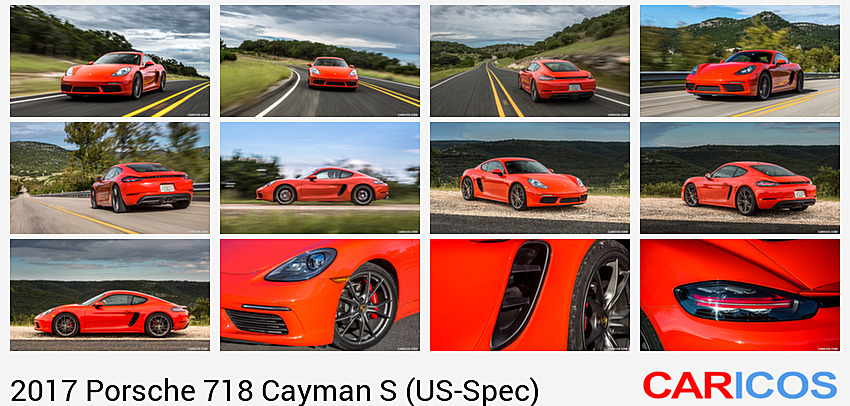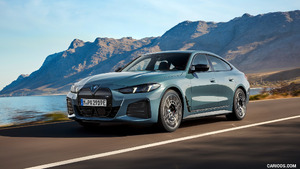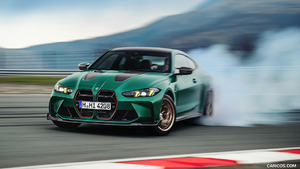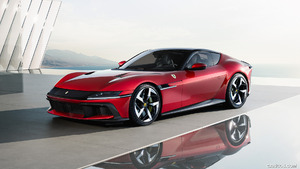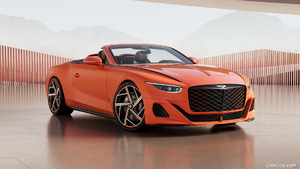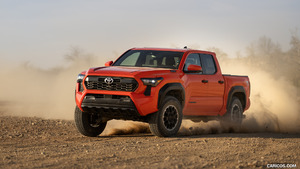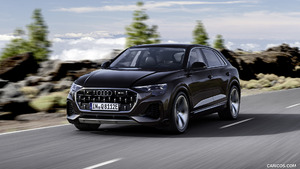Porsche 718 Cayman (US-Spec)
With the 2017 718 Cayman, Porsche is introducing the third generation of the mid-engine sports coupe. Like the 2017 718 Boxster, the 718 Cayman is powered by new turbocharged flat four-cylinder engines. Visually and technically, the 718 Boxster and 718 Cayman are closer than ever before. The completely retuned chassis, larger brakes and the distinctive sound enhance agility as well as driving pleasure. Sharper styling and an uprated interior give the 718 Cayman a more striking and athletic appearance. For the first time, the 718 Cayman is now priced below the 718 Boxster – similar to the 911 Coupe and Cabriolet models. The 2017 718 Cayman ($53,900 plus $1,050 delivery processing and handling fee) and Cayman S ($66,300 plus $1,050 delivery, processing and handling fee) can be ordered now and will reach U.S. dealers in late November 2016.
Powertrain
718 Cayman with two-liter, turbocharged flat four-cylinder engine delivering 300 hp. 718 Cayman S with 2.5-liter, turbocharged flat four-cylinder engine with VTG (variable turbine geometry) making 350 hp. Both engines make 25 more horsepower than their respective predecessor. The new powertrains also make up to 67 lb.-ft. more torque, which is available below 2,000 rpm, greatly increasing performance and usability in everyday driving situations.
Performance
With the new turbo engines, the 718 Cayman models offer superior acceleration and throttle response thanks to the Dynamic Boost function. The 718 Cayman with PDK and Sport Chrono Package accelerates from zero to 60 miles per hour in 4.5 seconds (0.6 seconds quicker than the previous model). With the same equipment, the 718 Cayman S takes just 4.0 seconds (0.4 seconds quicker than before). The top track speeds are 170 and 177 miles per hour, respectively. When equipped with the Sport Chrono Package, the PSM features a new Sport Mode with a higher threshold of intervention to suit performance-oriented drivers on enclosed tracks.
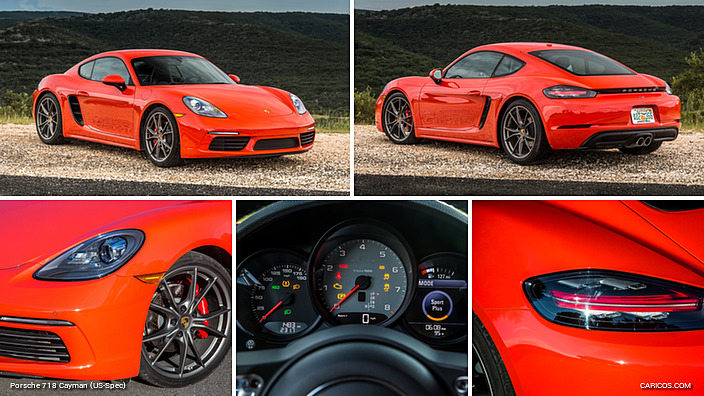 2017 Porsche 718 Cayman S (US-Spec)
2017 Porsche 718 Cayman S (US-Spec)
Chassis
Completely retuned chassis for further enhanced agility and a higher level of comfort. Larger brakes and multi-collision braking system as standard. Optional PASM chassis with a 0.43 inch (10-millimeter lower ride height). For the very first time, a PASM sport suspension with a 0.86 inch (20-millimeter) lower ride height is available as an option for the 718 Cayman S. More performance, further enhanced driving dynamics
Design
Exterior: Comprehensively advanced design. Only the luggage compartment lid, roof and windshield have been left unchanged. The front fascia has a sharper profile, which gives the front of the car a wider and more muscular appearance. Redesigned rear fascia appears wider due to the high-gloss black accent strip with integrated Porsche logotype. New clear glass tail lights with four-point brake lights.
Interior: New dashboard with redesigned vents. Optional Sport-Tex leather/fabric combination upholstery available for the first time. Offered in the combination of Black and Dark Silver or Graphite Blue and Chalk.
Infotainment
Porsche Communication Management (PCM) and the eight speaker Sound Package Plus audio system are standard. The capabilities of the PCM can be extended with options such as the Connect module. It includes special extensions for smartphones, such as the USB port, Apple® CarPlay™ and Porsche Car Connect. Another available option is the navigation module with voice control, which makes it easy to enter driving destinations. The Connect Plus module offers real-time traffic information, Apple® CarPlay™, Google® Earth, Google® Street View, and WiFi connectivity. Drivers can also make use of additional comprehensive services via their smartphone, which include the Porsche Connect App and Porsche Car Connect.
More performance, further enhanced driving dynamics
More powerful and performance-oriented with turbocharged four-cylinder engines: the new 2017 718 Cayman
The new 2017 718 Cayman complements Porsche’s mid-engine model line-up after the 2017 718 Boxster was introduced. Sharing the legendary 718 model designation, Boxster and Cayman are moving closer together both technically and visually. Boxster and Cayman share the new turbocharged flat four-cylinder engines that offer the same amount of power. The twoliter turbocharged flat four-cylinder engine in the 718 Cayman produces 300 horsepower, 25 horsepower more than the previous Cayman. The 718 Cayman S makes 350 horsepower from 2.5 liters of displacement, also 25 horsepower more than the outgoing Cayman S. Similar to the 911 Coupe and Cabriolet models, the 718 Cayman models are now priced below the 718 Boxster variants.
With the introduction of the turbocharged flat four-cylinder engines, the 718 Cayman equipped with the optional PDK transmission and Sport Chrono Package accelerates from zero to 60 miles per hour in 4.5 seconds. A 718 Cayman S with the same options takes just 4.0 seconds to reach 60 miles per hour from standstill. The top track speed of the 718 Cayman is 170 miles per hour, while the 718 Cayman S can reach a top track speed of 177 miles per hour. With its completely retuned chassis, the driving dynamics of the Cayman have been taken to new heights. Porsche Active Suspension Management (PASM) with a 0.43 inch (ten millimeter) lower ride height is optionally available for both variants.. The PASM sport chassis with a 0.86 inch (20 millimeter) lower ride height is additionally available as an option specifically for the 718 Cayman S.
To give the 718 Cayman a more striking and athletic appearance, every body part except for the luggage compartment lid, roof and windshield has been changed. Inside, a newly designed instrument panel distinguishes the cockpit. Furthermore, the latest generation of Porsche Communication Management (PCM) with a state-of-the-art touchscreen is included as standard. A navigation system as well as the Connect and Connect Plus modules can be selected as options.
Engine and transmission
Abundant torque and free-revving nature: the new turbocharged flat four-cylinder engines
The 718 Cayman is equipped with newly developed turbocharged flat four-cylinder engines. Their power has increased significantly compared to the previous engines, while retaining a similar level of efficiency. The new engines are characterized by good throttle response, their free-revving nature up into the highest rpm ranges and their passionate sound.
More important than the increase in horsepower is the torque advantage of the new engines. The two-liter engine of the 718 Cayman makes 280 lb.-ft. of torque (an improvement of 67 lb.- ft. ), which is available from 1,950 to 4,500 rpm. The 2.5-liter engine in the 718 Cayman S delivers up to 309 lb.-ft. of torque (37 lb.-ft. more than the previous Cayman S) from 1,900 to 4,500 rpm. This is the greatest torque increase in the history of the Porsche Cayman and gives the car a much higher level of usability, performance and responsiveness in rpm ranges that drivers use every day. The engines can rev up to 7,500 rpm, and retain about 95 percent of their power from 6,500 rpm to the redline, both characteristics reminiscent of naturally aspirated high-performance engines. During spirited driving, the driver is thus given the option of enjoying the free-revving nature of the engine and shifting through the gears, or to use the generous amount of torque available from low engine speeds throughout a large rpm range.
Quickly responding turbochargers typical for Porsche
The two versions of the new Porsche flat engine are not just distinguished by their displacement. In the two-liter engine, which operates with a maximum boost pressure of 20.3 psi (1.4 bar), a wastegate turbocharger pushes additional air into the combustion chambers. Just like the 718 Boxster S, the more powerful engine in the 718 Cayman S is equipped with a turbocharger featuring variable turbine geometry (VTG), similar to that of the 911 Turbo models. The maximum boost pressure of the 718 Cayman S is 14.5 psi (1.0 bar).
The VTG turbocharger in the 718 Cayman S uses an additional wastegate that allows the turbocharger with adjustable guide vanes to operate as efficiently as possible thanks to a targeted control of the exhaust gas stream.
Porsche engineers placed a particular priority on achieving throttle response that is comparable to that of a naturally-aspirated engine. This is achieved by “pre-conditioning” the turbocharger under partial load during spirited driving when the Sport or Sport Plus mode is active. The bypass valve (wastegate) is closed, the timing angle is reduced and the throttle valve is opened slightly. This increased the rate of air flow through the engine which allows it to maintain a higher level of boost pressure. When the driver applies full throttle, the higher level of boost pressure noticeable improves the engine’s responsiveness and rate of torque buildup. This preconditioning varies depending on the selected drive mode Sport or Sport Plus.
Furthermore, the new Dynamic Boost function improves throttle response when the driver lifts off the accelerator pedal during full acceleration and then gets back on it. At this time, the throttle valve remains wide open, while fuel injection is interrupted. As a result, boost pressure does not drop off completely, and the engine reacts promptly when the throttle is reapplied, comparable to a naturally aspirated engine. The effect is most pronounced in Sport and Sport Plus modes.
The turbocharger operates similarly when the Sport Response button is pushed. Just like in the 718 Boxster and the latest generation of 911 models, this button is located in the center of the mode switch on the steering wheel in vehicles equipped with PDK and Sport Chrono Package. Inspired by motorsport, it calibrates the engine and transmission to provide the maximum amount of acceleration and responsiveness for 20 seconds. Under partial load, the wastegate of the turbocharger is closed, allowing it to build up boost pressure faster. The engine responds more spontaneously to throttle inputs, and reaches its maximum power faster. Additionally, the PDK immediately downshifts to a lower gear, and a special transmission calibration is used with shift points that are even higher than in Sport Plus mode.
Porsche engineers have developed another innovative solution in the form of water-to-air intercooling. To avoid detrimental effects to the design and aerodynamics of the 718 Cayman, the turbo engines use the air intakes behind the doors for induction of process air and for water-to-air intercooling. The temperature of the charge air is reduced by an auxiliary loop of the cooling circuit. An intercooler mounted above the engine transfers heat from the turbocharger‘s compressed air to the coolant. The coolant then flows through a pair of radiators located behind the left and right air intakes.
Just like the 718 Boxster models, the engines of the new 718 Cayman and Cayman S share technologies used in the three-liter twin-turbo engines of new 911 Carrera to enhance their performance capability. Two direct-injection fuel pumps supply the system with a pressure of up to 3625 psi (250 bar). Previous models had a side injector position with 4- or 6-hole injectors and a maximum injection pressure of 120 bar. Centrally positioned 7-hole fuel injectors allow for optimal combustion.
Furthermore, the use of a now adjustable exhaust camshaft with valve stroke adjustment makes it possible to control the charge air exchange process even more precisely. On the intake side, Porsche continues to use the VarioCam Plus system. The dual-side, adaptive valve train with reduced friction helps to ensure spontaneous throttle response at low engine speeds, which is characteristic of a Porsche. By implementing the new cylinder lining process used in the three-liter 911 Carrera engines, in which a plasma beam coats the cylinder surface with iron, the engineers were able to minimize frictional losses. Like the 911 engines, the flat four-cylinder engines also feature a fully variable oil pump and a thermal management system with a water pump that operates on demand and is controlled in two stages.
Six-speed manual transmission as standard, optional seven-speed PDK
True to their pure, driver-focused character, all 718 Cayman models come with a six-speed manual transmission as standard. The six-speed manual transmission has been reinforced with new components and a stronger clutch due to the increased torque of the new turbocharged engines. The Porsche Doppelkupplung (PDK) with seven gears is available as an option and has also been strengthened with new components. Like in the latest generation of 911 models, the direction of shifting in manual mode has now been reversed to correspond to the logic used in race cars: pushing the gear selector forward initiates a downshift, pulling it back commands an upshift. Furthermore, the transmission holds the driver-selected gear and does not upshift at redline in manual mode.
Additional pendulum-type absorbers have been integrated in the dual-mass flywheel to support engine smoothness and reduce vibrations at very low engine speeds. The PDK features the enhanced Auto Start/Stop function, which shuts off the engine when the car is coasting to a stop and the driver has his foot on the brake. If required, this function can be deactivated using a button on the center console, and is automatically shut off in Sport and Sport Plus mode.
Sport Chrono Package for a particularly engaging driving experience
The optional Sport Chrono Package enhances the performance capabilities of the new 718 Boxster. Just like in the latest generation of 911, it now includes the Individual mode in addition to the three settings Normal, Sport and Sport Plus. The driver can individually configure the PASM, Sport Exhaust System, auto start/stop function, and rear spoiler by programming them using a specific menu in the instrument cluster and then save them as a preferred setting. In models with PDK, the Sport Response button is also added, which is located in the center of the mode switch. Inspired by motorsports, it enables the driver to configure the drivetrain to deliver maximum responsiveness and acceleration at the push of a button, for example before overtaking another vehicle. In conjunction with the Sport Chrono Package, Porsche Stability Management (PSM) of the 718 Boxster models features a PSM Sport mode. In this setting, ambitious drivers can approach the limits of the car more closely in a safe environment, such as an enclosed track. The PSM always remains active in case it is needed. In combination with the upgraded Sport Chrono Package, this leads to a particularly engaging and thrilling driving experience.
Chassis and assistance systems: New tuning and calibration for greater precision and agility
Adaptive engine mounts improve comfort and handling
Agility and handling are not only influenced by the position of the engine, but also by the way it is mounted. The flat four-cylinder engine is positioned to offer a nearly ideal weight distribution ratio of 45 to 55 percent between the front and rear axles. Like the 718 Boxster models, the 718 Cayman models now feature a four-point drivetrain mount, compared to the three-point mount of the previous generation. The engine now has two switchable and vacuum-controlled engine mounts, compared to the central engine mount of the previous model. The powertrain is still supported by two rear transmission mounts, and these are upgraded to adaptive dampers when the Sport Chrono Package is ordered. When the engine is idling, the engine mounts are uncoupled to provide the highest possible level of vibration damping and comfort. While driving, a stiffer setup of the mounts minimizes disturbances related to drivetrain movement. When equipped with the optional Sport Chrono Package, dynamic transmission mounts offer an even broader spread between ride comfort and precise handling. With an improved control system, the new generation of dynamic transmission mounts adapts even better to changing driving situations.
New suspension components and calibration for more precision and stability
To further enhance precision and lateral stability in driving performance, Porsche modified many components of the rear suspension. A new cross member strengthens the rear subframe, improving lateral rigidity. Shock absorbers with larger pistons also improve wheel guidance due to their greater rigidity. The rear wheels, which are half an inch wider than on the previous model, increase grip and improve cornering stability together with the new generation of tires, which offer increased dry and wet performance as well as reduced rolling resistance.
Retuned hydraulic vibration dampers as well as higher sway bar and spring rates reduce pitch and roll to a minimum. Porsche has also fitted the standard suspension with additional rebound buffer springs. They reduce front body lift under acceleration and body roll during hard cornering. At the same time, they also enhance comfort by improving suspension fidelity on bumpy surfaces.
Ten percent more direct: steering adopted from 911 Turbo improves handling
The electromechanical steering system, which is ten percent more direct, makes the 718 Cayman even more agile and easier to handle during spirited driving and in traffic. The new model incorporates the steering gear of the 911 Turbo with its quicker ratio. Power Steering Plus is available as an option. It reduces steering effort at low speeds while maintaining a reassuring level of stability at higher speeds.
The driver takes control of the 718 Cayman via a new generation steering wheel featuring a design based on the steering wheel of the 918 Spyder. When equipped with the optional Sport Chrono Package, the steering wheel features a mode switch, which was derived from the hybrid map switch found in the 918 Spyder. The mode switch consists of a rotary dial with four positions for the driving modes Normal, Sport, Sport Plus and Individual. On cars equipped with the optional PDK transmission, the Sport Response button is added.
Optional PASM sport chassis with 0.86 inch (20 mm) lower ride height offered for first time
Porsche Active Suspension Management (PASM) with a 0.43 inch (10 millimeter) lower ride height is available as an option on the 718 Cayman and Cayman S. Furthermore, the 718 Cayman S can be ordered with the PASM sport chassis with a 0.86 inch (20 millimeter) lower ride height. It offers a significantly stiffer setting in Sport mode to suit particularly spirited drivers. Both optional suspensions offer an even greater spread between ride comfort and agile handling thanks to extended sensor technology with an increased bandwidth of damper control. At each spring strut, a height sensor now measures ride height, and three accelerometers measure the g-load into the chassis, enabling an even more precise and sensitive control.
Optional Porsche Torque Vectoring (PTV) improves traction and agility
Using variable torque distribution and a mechanical differential lock at the rear axle, the optional Porsche Torque Vectoring system improves turn-in and traction when entering or exiting a corner. When turning into a curve at high speed, moderate brake pressure is applied to the inside rear wheel. As a result, the outside rear wheel receives a higher drive force, allowing for additional angular momentum in the direction the vehicle is being steered, thus improving turn-in precision and agility. When accelerating out of a corner, the mechanical differential lock provides additional traction and stability.
Upgraded brakes with multi-collision braking system
The 718 Cayman now employs the brake system that was previously used in the Cayman S, with front brake rotors measuring 13 inches (330 millimeters), representing a 0.6 inch (15 millimeter) increase compared to the previous model. The 718 Cayman S is equipped with the new four-piston calipers and thicker brake rotors (34 millimeters instead of 28 millimeters) of the 2017 911 Carrera on the front axle. The Porsche Ceramic Composite brake system (PCCB) with rotors measuring 13.8 inches (350 millimeters) at all four wheels is available as an option. The 718 Cayman models also come standard with the multi-collision braking system. The system can reduce the severity of a secondary collision by automatically braking the vehicle after an initial collision triggering an airbag deployment.
Porsche Stability Management with new “PSM Sport” mode
When equipped with the optional Sport Chrono Package, the Porsche Stability Management system offers a separate mode known as PSM Sport that is activated by briefly pushing the PSM button on the center console. PSM Sport differs significantly from the PSM On setting, and is now activated independently of the Driving Mode (Normal/Sport/Sport Plus). When the PSM Sport mode is activated, an indicator in the instrument cluster and the yellow “PSM Off” lamp are lit to inform the driver.
The new PSM Sport mode lets drivers approach the limits of the vehicle more closely on enclosed tracks. Compared to PSM On, the new mode permits much larger yaw angles as well as more wheelspin and allows the driver to experience the sports car's dynamic performance more intensely. It also makes it unnecessary to fully deactivate PSM. However, the PSM Off mode is still available by pressing the PSM button for a longer period of time, staying true to the Porsche philosophy of giving the driver full control over the vehicle. As a safety precaution, hard braking triggering the ABS activates the full range of PSM stability control until the brakes are released.
New optional assistance systems
The 718 Cayman can be ordered with new and improved assistance systems. Adaptive Cruise Control (ACC, option) now has a coasting function in conjunction with the PDK transmission. When driving in a queue of vehicles the clutches are disengaged, thus saving fuel by coasting. The optional Lane Change Assist monitors the driver’s blind spots and areas to the rear of the vehicle on both sides. Active as of 20 miles per hour, a visual signal in the corresponding door mirror warns the driver that a vehicle has been detected in the adjacent lane.
Design and interior features
Sharpened design distinguishes the new generation of mid-engined sports car
The design of the new 718 Cayman emphasizes the close relationship with the 718 Boxster. Apart from the roof and rear trunk lid, the two bodywork versions are closer than ever before visually – similar to the 911 Coupe and Cabriolet models.
When styling the 718 Cayman, the designers were inspired by the rich history of Porsche. Among the automotive predecessors of the 718 Cayman are the legendary mid-engine race cars such as the 550 Coupé (1953), 718 GTR Coupé (1962) and 904 Carrera GTS (1963). Their typical Porsche shapes and proportions live on in the 718 Cayman. More recent models such as the Carrera GT have also influenced the design. All of the above vehicles have contributed to the gene pool of Porsche design. With the 718 Cayman, Porsche is writing another chapter in the story of the unique mid-engine sports car.
The taut proportions of the 718 Cayman, prominent air intakes at the front and sides and low side profile underscore the increased performance. The redesigned front fascia gives the vehicle a wider and more muscular appearance. Reinforcing this effect are the narrow front lights above the outer cooling air intakes, which incorporate the positioning lights and turn signal indicators. The significantly larger cooling air intakes serve as a distinct symbol of the new turbo engines. Redesigned Bi-Xenon headlights with integrated LED daytime running lights are another striking feature and fitted as standard. LED headlights with four-point daytime running lights are available as a new option.
Viewed from the side, the 718 Cayman stands out thanks to its striking fenders and sill covers. With its even more clearly defined edge, the indentation in the door leads to the redesigned air intakes with 2 vanes. The enlarged air intake cover is another indication of the 718 Cayman’s increased performance. The rear fenders are less arched, emphasizing the width of the 718 Cayman. There is also a revised choice of wheels. The 718 Cayman comes standard with an 18- inch wheel, while the 718 Cayman S is fitted with a 19-inch wheel. Other 19- and 20-inch wheels are optionally available.
The new rear fascia has a much wider look due to the accent strip in high-gloss black with integrated Porsche badge between the tail lights. The tail lights, which have been completely redesigned, are distinguished by the three-dimensional technology inside them which is visible through the clear glass.
Restyled interior with Porsche Communication Management as standard
The interior picks up on the exterior’s consistent emphasis of horizontal lines and is characterized by an even higher quality and functionality that is typical for Porsche. The impressive leather trim has stitching which continues to the storage compartment. With its elevated air vents, the redesigned upper part of the dash panel reflects the distinguished three-dimensional exterior design. A sport steering wheel in the design of the 918 Spyder measuring 14.8 inches (375 millimeters) in diameter is standard. The 14.1 inch (360 millimeter) GT Sport steering wheel is available as an option. Porsche offers multifunction and steering wheel heating as options for all steering wheel versions.
A central element of the new interior layout is the Porsche Communication Management (PCM) unit which consists of a high-resolution, 7-inch color touchscreen with a high quality glass cover, proximity sensors and multi-touch gesture control. It also includes mobile phone preparation, 2 SD card readers with single CD/DVD drive, universal audio interface with an 11 GB jukebox and the Sound Package Plus.
The PCM can be enhanced with optional modules. The Connect module comprises an iPod-capable USB port on the center console, Apple® CarPlay™ including “Siri"™ voice control and Porsche Car Connect. Available in conjunction with the optional navigation module, Connect Plus additionally offers wireless internet access, an LTE telephone module, Google® Earth and Google® Street View and the Porsche Connect app.
A navigation module can be ordered as an option. It has an improved map display and can show maps two-dimensionally or in perspective. Three-dimensional representations are also possible in selected regions. The module includes free map updates within the first three years. The Connect Plus module is available in conjunction with the navigation module. It enables simple interfacing of a smartphone to the PCM and the use of online functions such as real-time traffic information, wireless Internet access for Wi-Fi devices and an LTE telephone module.
Specifications
Engine
| 718 Cayman | 718 Cayman S | |
| Type | Turbocharged flat four-cylinder engine | |
| No. of cylinders | 4 | |
| Valves/cylinder | 4 | |
| Displacement | 1,988 cm3 | 2,497 cm3 |
| Bore | 91.0 mm | 102.0 mm |
| Stroke | 76.4 mm | |
| Max. power output | 300 hp | 350 hp |
| at engine speed | 6,500 rpm | |
| Max. torque | 280 lb.-ft. | 309 lb.-ft. |
| at engine speed | 1,950 – 4,500 rpm | 1,900 – 4,500 rpm |
| Power output per liter | 151 hp/l | 140 hp/l |
| Compression ratio | 9.5:1 | |
| Maximum engine speed | 7,500 rpm | |
| Cooling system | Water cooling with thermal management and switchable water pump | |
| Valve control | Camshaft adjustment and VarioCam Plus valve lift adjustment for intake and exhaust | |
| Oil supply | Integrated dry sump lubrication and demand-controlled oil pump | |
| Engine charging | Single turbocharger | Single turbocharger with VTG |
| Intercooling | Indirect intercooling (two low-temperature air-water radiators and one water-intercooler) | |
| Exhaust system | Dual-branch exhaust system with central stainless steel tailpipe | Dual-branch exhaust system with central stainless steel dual tailpipes |
| Emission control system | Two three-way catalytic converters and on-board diagnostics for monitoring the emission control system | |
| Fuel management | Gasoline Direct Fuel Injection (DFI) | |
| Drive system | Mid-engine, rear-wheel drive | |
Power transmission
| 718 Cayman | 718 Cayman S | |
| Transmission | Six-speed manual transmission with single-disc clutch and dual-mass flywheel; optional seven-speed Doppelkupplungsgetriebe (PDK) | |
| Clutch diameter | Manual 240 mm; PDK 202/153 mm | |
| Gear ratios | Manual / PDK | |
| 1st gear | 3.31/3.91 | |
| 2nd gear | 1.95/2.29 | |
| 3rd gear | 1.41/1.65 | |
| 4th gear | 1.13/1.30 | |
| 5th gear | 0.95/1.08 | |
| 6th gear | 0.81/0.88 | |
| 7th gear | –/0.62 | |
| Reverse gear | 3.00/3.55 | |
| Rear axle | 3.89/3.62 | |
Chassis
| 718 Cayman | 718 Cayman S | |
| Front axle | Lightweight spring-strut suspension (MacPherson type; Porsche optimized) | |
| Rear axle | Lightweight spring-strut suspension (MacPherson type; Porsche optimized) | |
| Steering | Electromechanical power steering with variable steering ratio and steering pulse input | |
| Steering ratio | 15.0:1 (on-center) to 12.5:1 | |
| Steering wheel diameter | 375 mm; optional 360 mm | |
| Turning circle | diameter 36 ft. (10.98 m) | |
| Driving stability system | Porsche Stability Management (PSM) incl. ABS with extended brake functions | |
Brakes
| 718 Cayman | 718 Cayman S | |
| Brake system | Four-piston aluminum monoblock fixed caliper brakes, front and rear | |
| Brake discs, front axle | Grey cast iron; internally vented and perforated | |
| Diameter | 13.0 inches (330 mm) | |
| Thickness | 1.1 inches (28 mm) | 1.3 inches (34 mm) |
| Brake discs, rear axle | Grey cast iron; internally vented and perforated | |
| Diameter | 11.8 inches (299 mm) | |
| Thickness | 0.8 inches (20 mm) | |
Wheels and tires
| 718 Cayman | 718 Cayman S | |
| Wheels with tires, front | 8 J x 18 ET 57 with 235/45 ZR 18 tires | 8 J x 19 ET 57 with 235/40 ZR 19 tires |
| Wheels with tires, rear | 9.5 J x 18 ET 49 with 265/45 ZR 18 tires | 10 J x 19 ET 45 with 265/40 ZR 19 tires |
Dimensions
| 718 Cayman | 718 Cayman S | |
| Length | 172.4 inches (4,379 mm) | |
| Width / with door mirrors | 70.9 inches (1,801 mm) / 78.5 inches (1,994 mm) | |
| Height | 51.0 in. (1,295 mm) | 51.0 in. (1,295 mm) |
| Wheelbase | 2,475 mm | |
| Track width, front (for wheel size) | 59.6 inches (1,515 mm) (18") | 59.6 inches (1,515 mm) (19") |
| Track width, rear (for wheel size) | 60.3 inches (1,532 mm) (18") | 60.6 inches (1,540 mm) (19") |
Luggage capacity and weights
| 718 Cayman | 718 Cayman S | |
| Luggage capacity | 5.3 cu.-ft. (150 l) front, 9.7 cu.-ft. (275 l) rear | |
| Manual/PDK | Manual/PDK | |
| Unladen weight per DIN | 2,944/3,010 pounds | 2,988/3,054 pounds |
| Gross vehicle weight rating | 3,649/3,715 pounds | 3,671/3,737 pounds |
| Power-to-weight ratio | 9.8/10.0 lb./hp | 8.5/8.7 lb./hp |
Performance figures
| 718 Cayman | 718 Cayman S | |
| Manual/PDK | Manual/PDK | |
| Top track speed | 171/171 mph | 177/177 mph |
| Acceleration | ||
| 0-60 mph | 4.9/4.7 s | 4.4/4.2 s |
| 0 – 60 mph with Sport+ | – /4.5 s | – /4.0 s |
| 0-100 mph | 11.3/11.1 s | 9.7/9.5 s |
| 0-100 mph with Sport+ | – /10.8 s | – /9.2 s |
| Quarter mile | 13.4/13.2 s | 12.8/12.6 s |
| Quarter mile with Sport+ | – /13.0 s | – /12.4 s |
Fuel and emissions
| 718 Cayman | 718 Cayman S | |
| Fuel type | 93 octane (U.S.) | |
| EPA fuel economy | Manual/PDK | Manual/PDK |
| City | 21 / 22 mpg | 20 / 21 mpg |
| Highway | 28 / 29 mpg | 26 / 28 mpg |
| Combined | 24 / 25 mpg | 22 / 24 mpg |
| Fuel tank capacity | 54 l (64 l optional) | 64 l |
Aerodynamics
| 718 Cayman | 718 Cayman S | |
| Drag coefficient cD | 0.30 | 0.31 |
| Frontal area A | 2.01 m² | |
| cd x A: | 0.60 | 0.62 |

